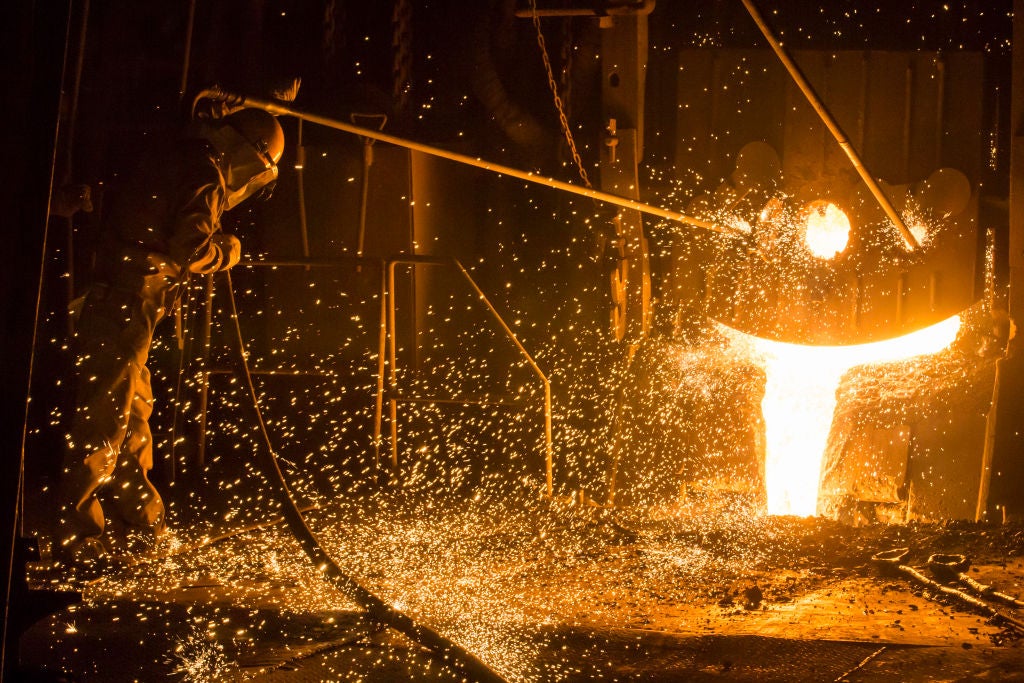
Statistics around steel boggle the mind. Just under two billion tonnes of the metal are produced worldwide every year, and steel production is responsible for 7% of global emissions. It is also the world’s most recycled material by volume, and the energy used to produce a tonne of steel has been reduced by around 60% in the past 50 years.
Despite the energy efficiency improvements, steel is one of 18 out of 50 sectors that is deemed to be “off track” from a net-zero 2050 trajectory, according to the 2023 Tracking Clean Energy Progress report produced by the International Energy Agency (IEA).
The report states that the global energy crisis “has not stalled progress on project announcements”, but that the “current pipeline of low- and near zero-emission projects falls short of what is required to meet the NZE [Net Zero Emissions] Scenario”.
Newly released steel data from GlobalData, Energy Monitor’s parent company, reveals just how significant that shortfall is.
The data shows that of the 230 steel plants planned worldwide where the technology is known, more than 70% are traditional blast furnaces. Producing steel in blast furnaces is a carbon-intensive process that sees coke – derived from coal – heated to 1,650°C (3,000°F) alongside iron ore, before it is reacted with carbon to make steel.
GlobalData’s data shows that 25% of the world’s planned steel production facilities feature electric arc furnaces. These furnaces heat electrodes with an electric current to melt scrap iron and steel down so that it can be recycled.
Given that these furnaces can be powered by renewable electricity, they are compatible with a net-zero future without having carbon capture and storage installed alongside, as would be the case with blast furnaces.
However, boosting the steel circular economy will not be enough to meet future demand, given that the material is essential to many clean energy technologies, from wind turbines to electric vehicles. Annual steel demand is expected to grow by 20% by 2050, according to the World Steel Association.
Keep up with Energy Monitor: Subscribe to our weekly newsletterWhen it comes to decarbonising primary steel production, green hydrogen, which is produced with renewable electricity, is widely touted as a key solution. By reacting hydrogen directly with iron ore in a process called direct reduced iron (DRI), iron and water are produced in place of iron and CO₂.
DRI can take place at the relatively low temperature of 1,000°C (1,832°F), and the liquid metal can then be processed in an electric arc furnace. It is already carried out in commercial facilities worldwide using natural gas.
However, while there is a lot of industry hype around hydrogen in the steel sector – with Europe’s first commercial green hydrogen steel plant set to open in Sweden in 2025 – data from GlobalData shows that only 3% of planned steel production facilities intend to use hydrogen technology.
Decarbonising steel is a massive undertaking: a recent report found that decarbonising the steel and iron ore industry by 2050, in line with the Paris Agreement, will require $1.4trn of funding, and revolution across every stage of the value chain.
Nevertheless, if governments were to implement an effective policy framework addressing the whole value chain, then the task is certainly possible. Indeed, a recent report from the German think tank Agora Energiewende finds that in such a scenario, the global steel industry could be decarbonised by the early 2040s.
Read more from this author: Nick FerrisThe report states that proper planning and financing of renewable energy, hydrogen, carbon capture and storage infrastructure will be needed to “kick-start” the green steel industry. It adds that the key levers needed to decarbonise the steel sector are “higher material efficiency, a significant increase in scrap-based steelmaking; as well as kick-starting hydrogen-based steelmaking”.
“Our study shows that it is time to remove the ‘hard-to-abate’ label from the steel industry,” said Frank Peter, director of Agora Industry, in a press statement. “The technologies and strategies required to reach net zero are already there – now governments and companies need to combine their efforts to deploy them fast.”
For the time being, however, governments and companies have yet to fully embrace such technologies and strategies, shows GlobalData’s data.




